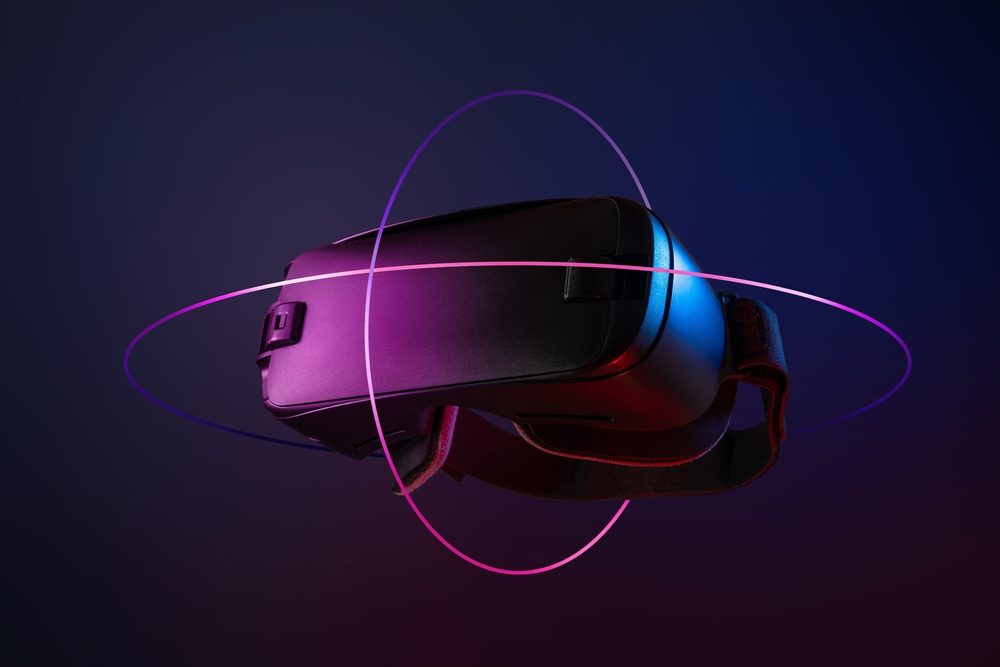We provide our thoughts on the latest Consumer Electronics Show conference.
- We believe that many advancements across industries are likely to rely on effective artificial intelligence (AI) to attain further growth. This observation reinforces our conviction in companies that provide hardware which enables advanced computation as well as those that provide advanced software capabilities for companies engaging in AI research.
- Manufacturing and construction sectors are looking to digitize their workflows through processes such as virtual design capabilities and physical product testing simulations.
- Although broad sentiment on metaverse-exposed stocks has dampened, the metaverse continues to appear primed to shape the next generation of human interaction.
We recently attended the annual Consumer Electronics Show (CES) conference in Las Vegas, which is broadly thought to be one of the most influential technology events in the world. At Newton, we understand that boots-on-the-ground research can be incredibly advantageous when considering longer-term thematic opportunities. Here, we share some of our most compelling takeaways from the CES conference.
Artificial Intelligence
The conference’s software demonstrations and the recent clamor around ChatGPT, an artificial intelligence (AI) chatbot auto-generative system, highlighted the excitement around the future of AI and its consumer and enterprise applications. However, advances in these applications and the algorithmic complexity needed to achieve them creates intense computational demand on the datacenters that serve these AI use cases. A leading semiconductor company’s executive tabbed the pace of this intensification at roughly two times every three to six months, with future workloads concentrated in developing advanced language models, recommendation systems and generative AI. More general commentary suggested that approximately 5% of existing data-center fixed assets serve AI functionality, versus about 10% of fixed assets being installed at the margin (with substantial headroom for this number to go up). We believe the pace of this development should only quicken in the face of a tougher macro environment as technology companies position themselves to be more competitive.
In particular, computing hyperscalers have recently recognized AI investments as a key driver of capital-expenditure growth that are necessary given this more competitive landscape. Some believe broader “AI reconfiguration” could result in greater graphics processing unit (GPU) intensity at data centers that are currently under construction. This focus extends well beyond “big tech.”
On the consumer side, numerous AI-powered product conference demonstrations spanned predictive management of utility usage in homes, pocket-sized advanced voice assistants and autonomous decision-making on the road. Even industrial companies showcased their incorporation of AI, with one construction equipment manufacturer presenting an autonomous truck and another manufacturer of farm machinery and industrial equipment displaying a tractor with smart planting capabilities.
The CES conference demonstrated that numerous advancements across sectors are likely to rely on effective AI to attain further growth. This observation reinforces our conviction in companies that provide hardware which enables advanced computation, as well as those that provide advanced software capabilities for companies engaging in AI research. As we look across our opportunity set, we continue to study how AI is expected to shape the future of these competitive landscapes and potential consequential breakthroughs in AI development.
Manufacturing and Construction in the Digital Age
From smart city planning to digital models of electric vehicles, the automobile pavilion offered many examples of how the manufacturing and construction sectors are looking to digitize their workflows. Advances in geographic information system (GIS) technology, augmented/virtual reality, and simulation technology pair with rising complexity in physical end products to create a case for incorporating technology into physical processes.
This digital augmentation of physical processes was on full display at CES, illustrated by the application of digital twin technology, which can create virtual representations of buildings and products for architects and product designers. The virtual enhancement of the design process promotes modular design, making product manufacturing and testing more efficient. This is especially true for products such as autonomous/electric vehicles that contain a great deal of complex subsystems. In construction, digital design can accelerate completion timelines when personnel and material are in the field. This technology can also expedite the project bid process for general and sub-contractors, which should become more important as infrastructure funding gets disbursed in volume. Numerous companies have come to market with solutions ranging from broader project-planning software to targeted software for waste reduction and efficient materials usage.
The second example of this is the growing role of simulation technology as both a substitute for physical product testing and a source of training data for embedded software. One booth highlighted the use of simulated road data to train and test autonomous vehicle decision-making software, addressing a data-availability concern that advanced driver assistance systems (ADAS) players have repeatedly voiced. Using advanced simulation as a substitute for physical product testing and quality control should improve time-to-market speeds and reduce product development expenses.
Overall, our takeaways from the CES conference reinforce our belief in digital transformation as a theme with continued strength. The focus on historically archaic processes in industrials and manufacturing illustrates a catalyst for future growth in digital transformation as workflow innovation continues. Both developers of software that enable this innovation and the companies benefiting from the consequent realized efficiencies present themselves as potential new opportunities.
The Metaverse
Despite a fading hype cycle, participation at the CES conference demonstrated a clear commitment to augmented/virtual reality in both consumer product development and digital transformation. Developers in the gaming pavilion showcased numerous next-generation video games using virtual reality to create a more immersive and sensory-rich environment for the game player. The focus on the next generation of entertainment broadly revolved around virtual reality-based gameplay and live events, reinforcing the potential for the metaverse to reshape how the consumer receives entertainment. However, metaverse applications went beyond consumer uses and ventured to the enterprise applications as well. Numerous products aiding digital collaboration and virtual workspaces demonstrated a potential vision for future office work.
A lack of credible and affordable virtual-reality headsets remains a prominent barrier for metaverse adoption. However, some suggest that, as headset offerings broaden, adoption costs should also decrease, and as virtual-reality applications proliferate, the metaverse should continue to expand its role in both recreation and work.
Although broad sentiment on metaverse-exposed stocks has dampened, the metaverse continues to appear primed to shape the next generation of human interaction. With this in mind, we continue to look for opportunities in device makers, next-generation social media concepts, game developers suited to virtual reality/augmented reality environments and creator/marketplace platforms.
Conclusion
Our attendance at the annual CES conference strengthened our conviction in a number of critical thematic areas including artificial intelligence, digital transformation and virtual-reality applications, and helped us drill down on many of these areas, informing our thematic research and where thematic opportunities may lie. For example, the conference’s emphasis on technological enhancements to sectors that historically have had little process improvement, like industrials, reinvigorated our belief in the longevity of the digital transformation theme. We believe that powerful shifts across economies and industries will be instrumental in shaping the investment landscape over the coming years and that our attendance at these events can provide further clarity and bottom-up context as we continue to uncover opportunities to benefit our clients.
PAST PERFORMANCE IS NOT NECESSARILY INDICATIVE OF FUTURE RESULTS. Any reference to a specific security, country or sector should not be construed as a recommendation to buy or sell this security, country or sector. Please note that strategy holdings and positioning are subject to change without notice. Analysis of themes may vary depending on the type of security, investment rationale and investment strategy. Newton will make investment decisions that are not based on themes and may conclude that other attributes of an investment outweigh the thematic structure the security has been assigned to. For additional Important Information, click on the link below.
Important information
For Institutional Clients Only. Issued by Newton Investment Management North America LLC ("NIMNA" or the "Firm"). NIMNA is a registered investment adviser with the US Securities and Exchange Commission ("SEC") and subsidiary of The Bank of New York Mellon Corporation ("BNY"). The Firm was established in 2021, comprised of equity and multi-asset teams from an affiliate, Mellon Investments Corporation. The Firm is part of the group of affiliated companies that individually or collectively provide investment advisory services under the brand "Newton" or "Newton Investment Management". Newton currently includes NIMNA and Newton Investment Management Ltd ("NIM") and Newton Investment Management Japan Limited ("NIMJ").
Material in this publication is for general information only. The opinions expressed in this document are those of Newton and should not be construed as investment advice or recommendations for any purchase or sale of any specific security or commodity. Certain information contained herein is based on outside sources believed to be reliable, but its accuracy is not guaranteed.
Statements are current as of the date of the material only. Any forward-looking statements speak only as of the date they are made, and are subject to numerous assumptions, risks, and uncertainties, which change over time. Actual results could differ materially from those anticipated in forward-looking statements. No investment strategy or risk management technique can guarantee returns or eliminate risk in any market environment and past performance is no indication of future performance.
Information about the indices shown here is provided to allow for comparison of the performance of the strategy to that of certain well-known and widely recognized indices. There is no representation that such index is an appropriate benchmark for such comparison.
This material (or any portion thereof) may not be copied or distributed without Newton’s prior written approval.





